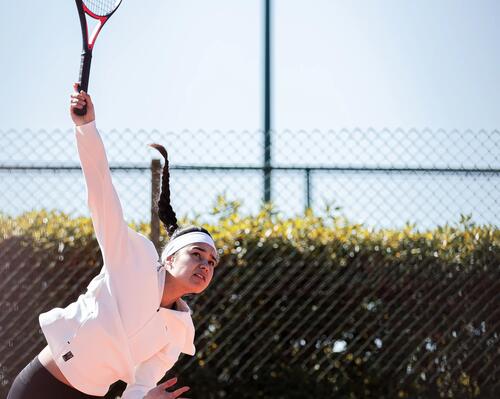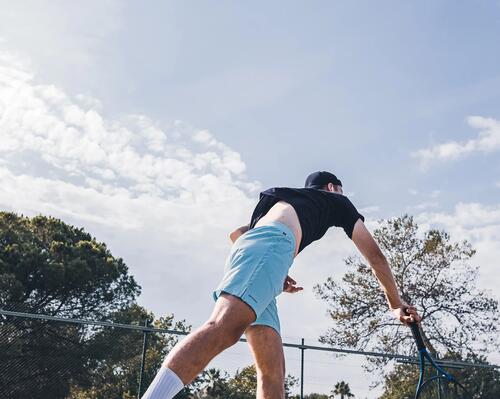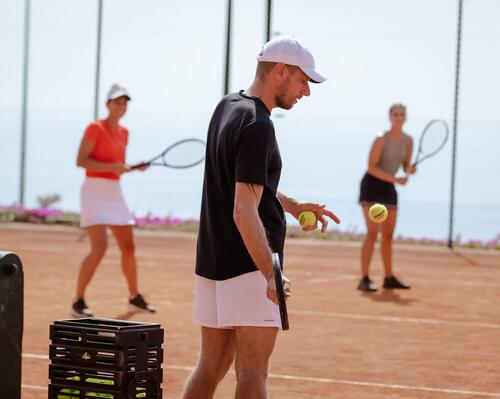However, these three types of tosses are fairly visible, and if your serve isn't perfect, you can give your opponent a chance to go on the offensive.
If what you want is to cover your tracks when you serve, you'll need to go for a neutral toss, a bit like the toss for a flat serve.
It's the toss that will let you do anything. Of course, you'll need to compensate for this neutral toss with good technique, a much greater push with the legs, and a stronger shoulder rotation.
For a slice, for example, with a neutral toss you'll need to hit your ball much higher with a powerful push through the legs.
That way, you'll open up a much greater outer slice angle. Your shoulders will also need to move strongly along with the motion in order to provide rotation to the ball.
During a slice with a right toss, it's mostly your arm that provides rotation. So you'll need to compensate here by rotating your shoulders.
Your wrist plays a role too - you'll need to put in a greater effort towards the inside to put spin on the ball.
Doing a neutral toss isn't complicated. The hard part is to compensate for your toss with a flawless technique.
Try working on the different aspects of your toss, and to hide your serves more and more using a neutral toss.
Your turn to play!







